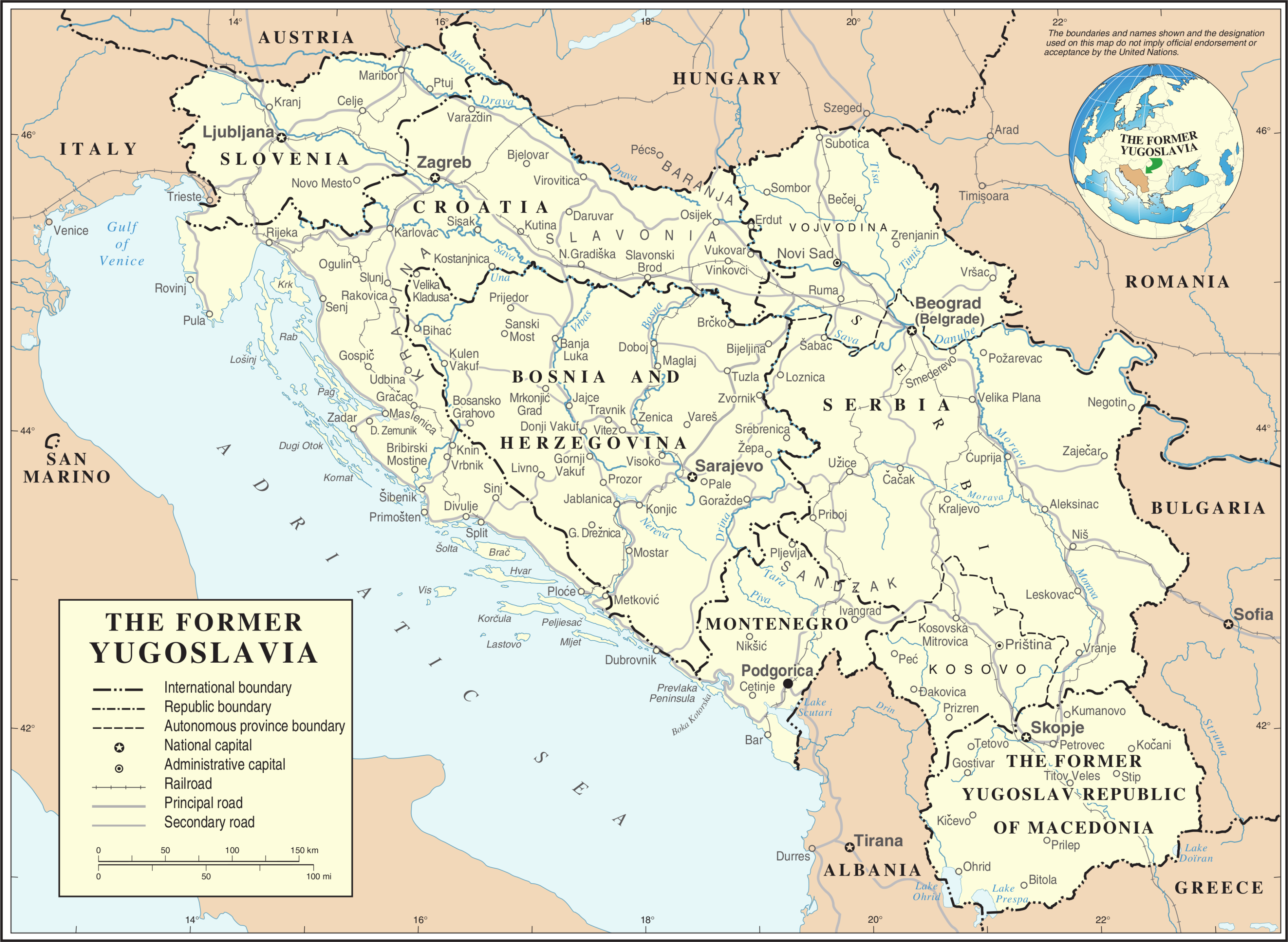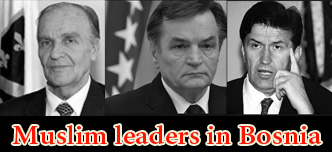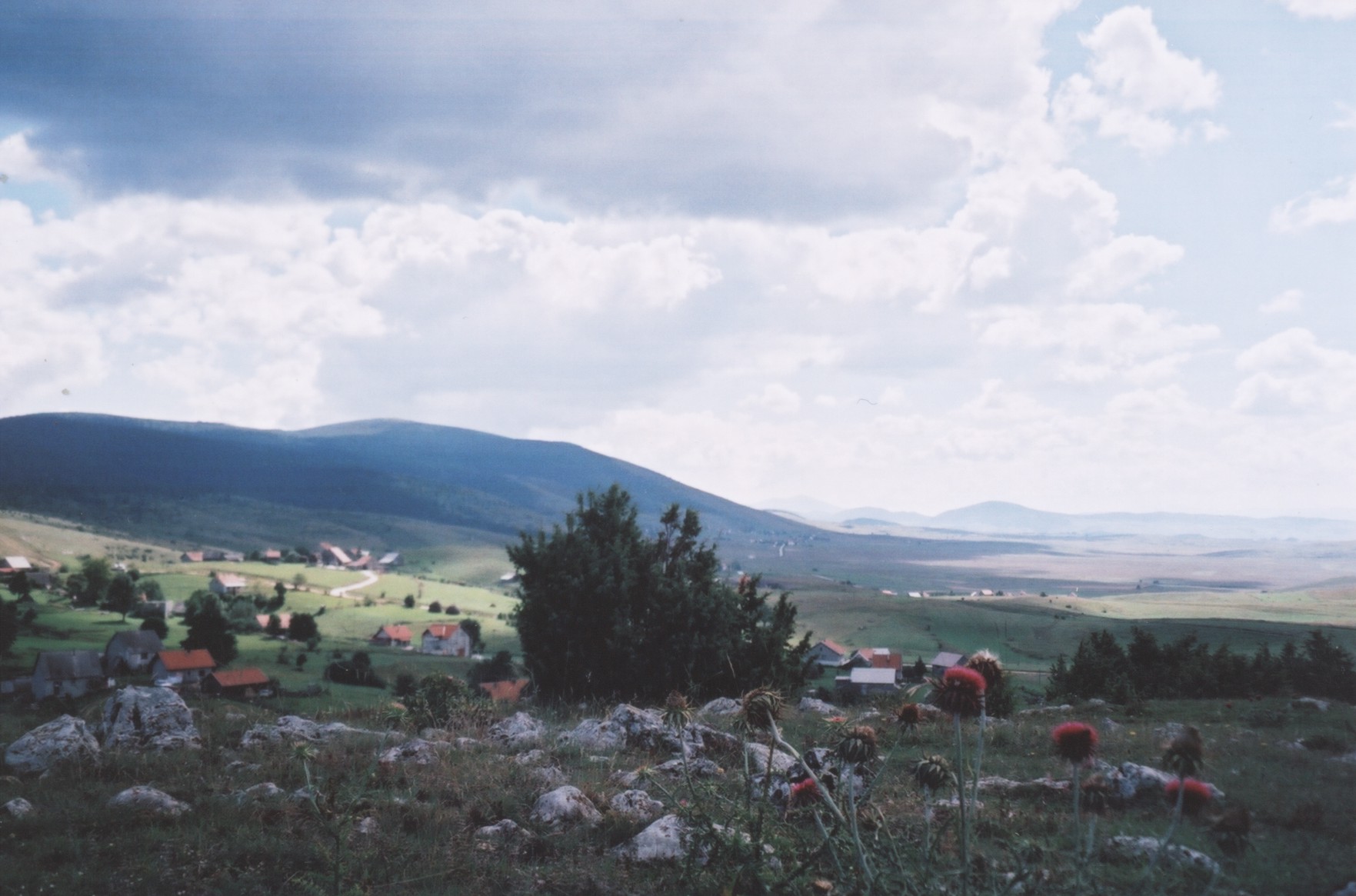|
|
Period:
Yugoslav Wars
Region:
Bosnia's Krajina
The Croatian crime in Kupres - Bosnia 1992
The crime in Kupres 1992 is organized ethnic cleansing of Serbs at the beginning of the April of 1992 in Kupres municipality (Bosnia) conducted by leading members of HDZ Kupres.
Members of HOS and the regular Army of the Republic of Croatia attacked villages around Kupres and the town of Kupres itself and killed Serbian civilians.
Only on April 8, 1992 did the Federal Army of Yugoslavia (JNA) units led by colonel Slavko Lisica arrive, having liberated the Kupres area and investigated war crimes committed by the Croatian military and paramilitary forces within five days.
The most of these crimes can't be imagined to happen, lest to describe. Nobody was charged of these crimes, although the Ministry of Interior of Republic of Srpska submitted enough evidence to the Bosnia Prosecution for initiation of criminal charges.
BACKGROUND
SFR Yugoslavia was a federal state made up of 6 republics (FR Slovenia, FR Croatia, SR Bosnia, and Herzegovina, SR Montenegro, SR Serbia, and SR Macedonia). Both Yugoslavia and the JNA were established on the principle of “brotherhood and unity” of all peoples and nationalities who lived in the SFRY.
The social and economic system of the SFRY was socialism.
The 1974 Constitution of Yugoslavia brought about the decentralization of the SFRY, which later enabled the separatist forces in Slovenia and Croatia, and later in Bosnia and Herzegovina to begin the dissolution of Yugoslavia, followed by bloody wars and persecution.

In all the constitutions of Yugoslavia, the Yugoslav People's Army was defined as the only legitimate armed force in the territory of the SFRY, and therefore, the only internationally recognized military entity. At the end of 1989, the SFRY Assembly passed amendments to the Constitution, thus replacing the one-party system with the multiparty system, which meant that besides the Alliance of Communists of Yugoslavia, other parties could now be formed.
At the end of January 1990, the Alliance of Communists of Yugoslavia collapsed, at the 14th SKY Congress in Belgrade, when sharp verbal clashes between Slovenian and Serbian delegates occurred regarding the future of the joint state of the SFRY.

Opposing sides - Kučan and Milosević
The Slovenian delegation left the session, immediately followed by the delegation of the FR Croatia, which brought the issue of the congress into question. After them, the delegations of the FR of Bosnia and Herzegovina and the FR of Macedonia also left the congress.
Thus, after 45 years, the rule of the communists in SFRY ended.
The situation in Bosnia and Herzegovina
Bosnia and Herzegovina has been a central republic within the Socialistic Federal Republic of Yugoslavia, where Muslims, Serbs, Croats, and national minorities lived. On 18 November 1990, a multiparty election took place, the first after World War 2. The government was formed by the anti-communist parties- SDA, SDS, and HDZ. MP that won the highest number of votes (47,4%) was Muslim Fikret Abdić, a businessman from Velika Kladuša.

Alija Izetbegović, Ejup Ganić, and Haris Silajdžić
However, he was under pressure by Muslim extremists to step aside since he was against the war and conflicts with Serbs. As it turned out, he only served as bait for Muslim voters.
Alija Izetbegović, a pre-war criminal and author of the notorious chauvinistic “Islamic Declaration” became president of the presidency of B&H. Momčilo Krajišnik, a member of the Serbian party (SDS) became president of the Parliament, while a Croat Jure Prelivan was appointed to the prime minister of the Federal Republic of Bosnia and Herzegovina. The coalition ruled for 15 months. It collapsed at the beginning of the conflicts in Bosnia in April 1992.
Leaders of Muslim Party of Democratic Action- Alija Izetbegović, Ejup Ganić, Haris Silajdžić, and others, advocated the independence of Bosnia and Herzegovina from Yugoslavia as early as 1991. Muslim SDA and Croatian HDZ shared a goal of an ethnically and religiously cleansed state. However, Bosnian Croats wanted integration with Croatia, while Muslims wanted to create an Islamic state.

Izetbegović participated in WW II in notorious Bosnian Muslim 13th Waffen
Mountain Division of the SS Handschar (1st Croatian) member,
known for the WW II genocide of Serbs
The Bosnian independence propaganda was spread by the media and press. As early as October 1991, the press in Sarajevo published open threats directed towards Serbian people. Among everything else, it was announced that the notorious Hadschar Division, Ustasha unit that committed horrible crimes against Serbs in the Independent State of Croatia (NDH) during 1941-1944, would be re-established. This unit had been mostly filled with Muslims. Ustasha crimes in NDH reached their peak in Bosnia itself with Prebilovci, Drakulić, Bileća, Gacko, Donja Gradina, Kupres as the most suffering places.
August 1995 witnessed organized arming of paramilitary forces of Muslims and Croats in Bosnia and Herzegovina through channels of the parties SDA and HDZ, intending to attack the Yugoslav People's Army (JNA). In October 1991, local committees of paramilitary units "Green Berets" and "Patriotic League" were established. In the second half of 1991, Mostar was full of members of the JNA, who came from Croatia (Dalmatia and Dubrovnik area), from where they were expelled or withdrawn. They further withdrew in Užice (Serbia) at the end of March 1992.

Sefer Halilović - founder of Bosnian Muslim paramilitary forces
On March 1, 1992 a referendum on the separation of Bosnia and Herzegovina from Yugoslavia was organized with 62.4% of voters having voted for independence. A day later in Sarajevo, members of the "Green Berets", led by a criminal Ramiz Delalić aka Ćelo started shoting at a Serbian wedding party at Baščaršija having killed the groom's father Nikola Gardović and wounded priest Radenko Miković.
This was an event that announced the bloody war in Bosnia-Herzegovina in the 1990s, but this also served as cause to dissolve still nationally-mixed police in Sarajevo. After that, numerous attacks on Serbian positions in Bosnia and Herzegovina and on members of the JNA occured (Sijekovac, Kupres, Sarajevo, Tuzla...). International representatives remained silent to these events.
The situation in Kupres
Kupres is the town in Southwest part of Bosnia and Herzegovina. The Kupres municipality includes a plateau at 1,200 meters of altitude and encompasses area of more than 550km. The Kupres plateau has important geostrategic position in B&H.
In this area, Serbs were majority ethnic group for centuries.
During World War 2, Croatian and Muslim fascists (Ustasha units) 1,038 Serbs in Kupres, among which 255 were children below 10 years. Serbs from this area were mostly the members of Yugoslav Partisan guerillas and 500 of them died as NOR soldiers.
Even the genocide committed against Serbs during World War 2 in the territory of NDH couldn't disturb the majority held by Serbs. According to cadastral data, 70% of the land property in the municipality of Kupres was possessed by Serbs after 1946 (that is, after the War).

Serbian village on fire - WW2
When the War began in summer 1991 in Republic of Croatia, a number of young Croats moved to Croatia to fight on Vukovar front against Serbs and JNA (Yugoslav Army). This coincided with illegal arming of Croats from Bosnia in Kupres and that was the time when paramilitary formations HVO and HOS had been formed under the supervision of HDZ in Kupres.
The Crisis Head Office and the Operational Office of Territorial Defense were also formed together with their affiliates. They were well armed and they sent daily treats to their Serbian neighbours that they would kill them. They marked Serbian houses with special labels as in the time of NDH.

Beautiful landscape of Kupres
On March 30, 1992 Božo Rajić, leader of HDZ Kupres informed in writing Gojko Susak, minister of Defense of the Republic of Croatia and Stjepan Kljujić, leader of HDZ in Bosnia and Herzegovina on situation in Kupres and that ethnic cleansing of Serbs may began.
In March 1992, Croats and later Muslims from Kupres and surrounding places moved their wives and children out of Kupres, and only armed men stayed there. By the end of March armed soldiers of Croatia could be seen walking around in Kupres which generated great fear among local Serbs who reasonably worried that genocide from World War 2 could have been repeated. Checkpoints were installed at every significant road under control of HVO and HOS. They would also break into premises of enterprises and put their guards there.
THE CRIME
In the morning of April 3, 1992 detonations and shooting from firearms could be heard from the village Malovan which is located 12 km from Kupres. The members of Croatian forces of HVO and HOS entered Serbian villages in Kupres and killed some Serbian civilians and some took to camps: Lora, Ljubuški, Zadar, burning Serbian houses and business premises.
One attack happened on this day was organized in the Croatian village Šuice by the members of Croatian units of HOS and ZNG and local Croats. They wore black uniforms with mark “U” which is Ustasha mark from World War 2. Those local Serbs who failed to escaped were killed in their homes. On that day, 20 Serbs were killed in Donji Malovan.
The attack on Kupres on April 3, 1992 was carried out by the Croatian regular army- ZNG, together with paramilitary formations which were organized by leadership of HDZ in Kupres, Duvno and Livno and paramilitary formations of the party named HSP. Those units of the Croatian army which took part in this criminal act were:
-
The 106th Osijek Brigade - the Army of the Republic of Croatia
-
The 101th Zagreb Brigade - the Army of the Republic of Croatia
-
The Student Battalion “King Tomislav” from Zagreb - the Army of the Republic of Croatia
-
The Special Unit “Žuti Mravi” from Vukovar - the Army of the Republic of Croatia
-
The Unit for Special Missions of Ministry of Interior of Croatia
-
The Battalion of the Croatian Army named “Zrinjski”
This attack of Kupres and its surrounding villages occured at the time when Bosnia and Herzegovina was still part of Yugoslavia. It is worth to note that there was no single soldier of JNA in the area of Kupres at the beginning of April 1992.
On April 6, 1992 the town of Kupres was attacked by Croatian units who were backed up by local Croats. The attack was conducted with heavy artillery destroying buildings owned by Serbs.
On April 7, 1992 forces of JNA arrived in Kupres under the command of Slavko Lisica. They liberated Kupres and its villages, and Croatian forces retreated to Croatia. They took dozens of Serbian hostages and brought them to the camp “Lora”.
LIST OF VICTIMS
Serbian civilians killed in April, 1992
-
Bastić T. Predrag, from Kupres, born in 1971 in Livno. Murdered in the basement of Mileno Vila on April 5, 1992.
-
Bosnić N. Spiro, from Kupres, born in 1954 in the village Barjamovci, slaughtered
INDICTMENTS
On March 29, 2013 the Ministry of Interior of the Republic of Srpska submmited criminal charges to the Bosnia Prosecution for war crime against Serbian civilians in the area of Kupres within the period of April and May 1992.
Indictment included 8 persons of Croatian nationality who were members of HVO, ZNG and HOS: Božo Rajić, Davor Glasnović, Željko Glasnović, Milenko Filipović, Marko Vila, Ivo Čičak, Dragan Marić, and a person with last name Bošković.
AFTERMATH
Serbs who lived in the area of Kupres were in great agony during spring of 1992. After units of JNA arrived and liberated Kupres on April 8, situation normalized. JNA general Slavko Lisica ordered operation of searching for Serbs who were killed by Croatian units between April 3 and 7, 1992.
There was attempt to exchange captives on June 29, 1993 in Čelebić near Livno, which was organized on behalf of Serbs by Mitar Marić and on behalf of Croats by members of HVO: Božo Rajić, Jožo Marić, Valentin Ćorić, with mediation of representatives of the Observation Mission of EU. Croatian representatives didn’t stick to the agreement.
At the beginning of November 1994, joint Croatian and Muslim forces (HVO and the army of B&H) in the operation “Cincar” attacked Kupres again and seized it. Serbian people were expelled or killed. After the Dayton Agreement 1995, Kupres became the part of the Muslim-Croatian Federation. Today, a few Serbs have returned to Kupres and nearby villages. The majority is scattered throughout the world, far from their homeland.
It is still unknown what happened to 14 Serbs who were taken to camps: Lora, Zadar and Ljubuški.
Tags:
Please, vote for this article:
Visited: 3145 point
Number of votes: 8
|